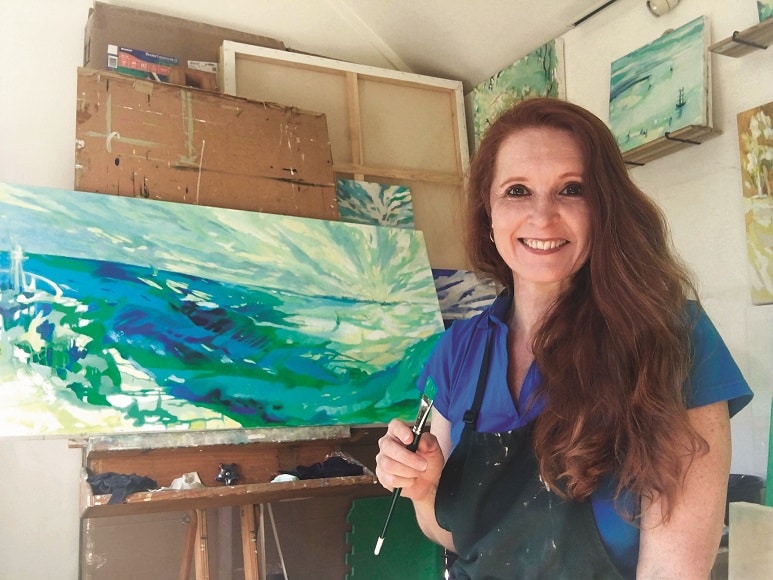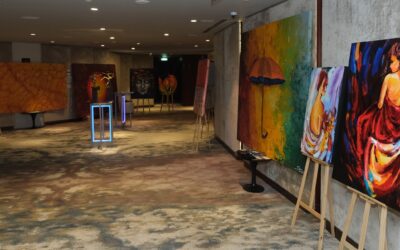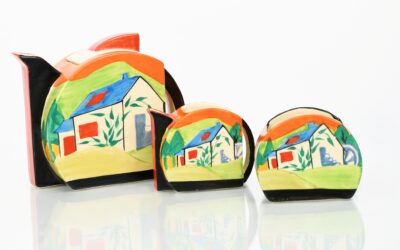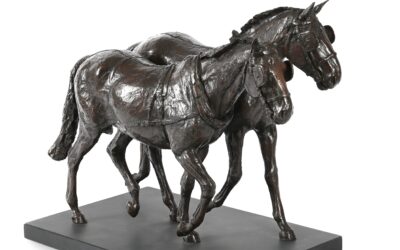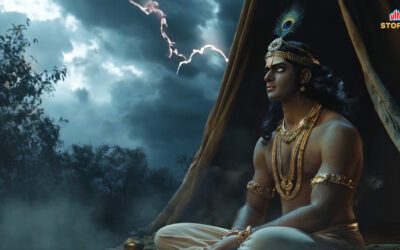“Growing up as an Aussie kid, dodging blue tongue lizards and the midday sun, creating art came naturally. Even at the young age of 3 I was given the ultimatum of ‘dummy or fuzzy felts’ (a box of crafted felt shapes that you create scenes with). I chose the creative option, and have been doing so ever since. I was introduced to artistic possibilities early in my life. My father was a carpenter, always collecting, fixing and inventing in his garage, and my mother was always in the middle of a craft project. She was a fine seamstress too, and made many of
her own clothes and some of mine as a kid. I grew up never far from a pencil or a glue pot. I remember the almost daily catch cry to clear the table of my pencils and paper in order to set it for dinner. I loved school and learning. I would spend extra hours on elaborate title pages for many of her projects, just because I loved creating,” says artist Kristine Ballard.
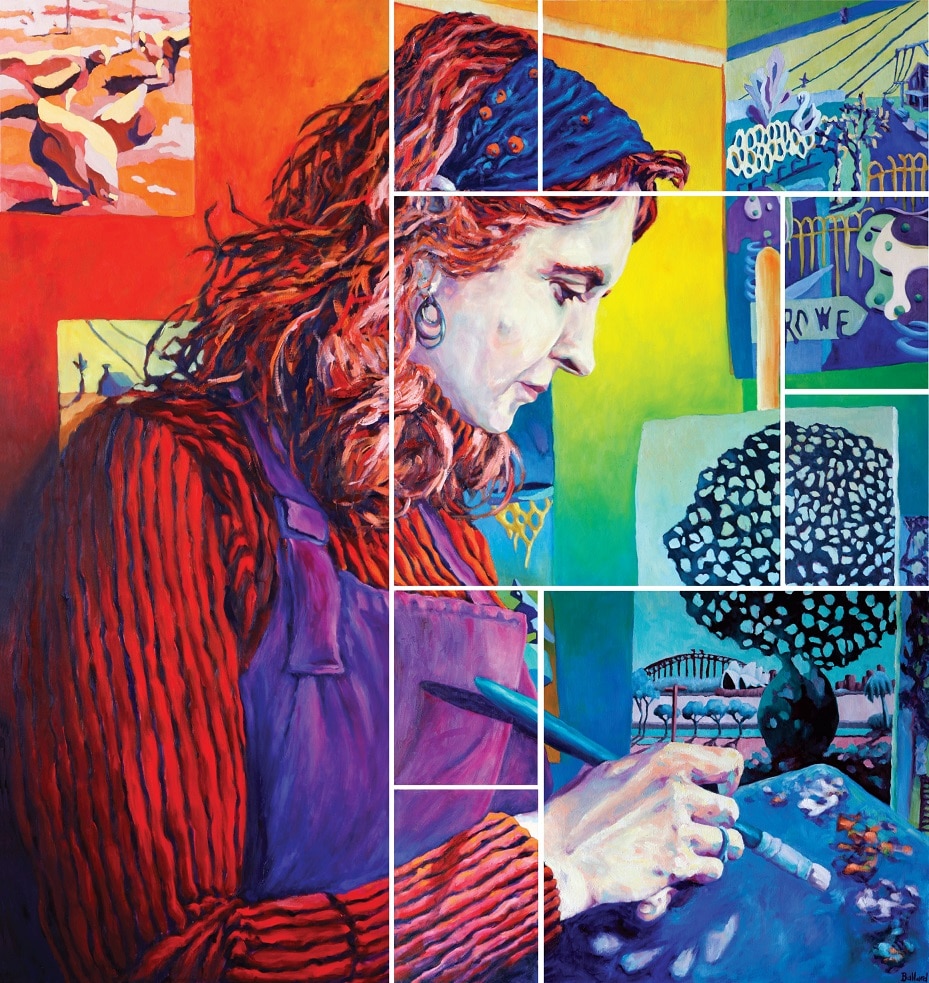
Pieces of me-Self portrait
This love of design led her onto tertiary training where she attained a Bachelor of Arts in Design (B.A.D.) at Newcastle University in 1992. After graduating, she made my way to Sydney where she worked as a Graphic designer and Design Manager. 25 years in the industry has taught her the disciplines of planning and meeting deadlines. She is also aware of the value of assessing expectations, asking the right questions when creating design solutions, especially visual ones is a vital element to a successful outcome and a happy collector or client.
What’s integral to the work of an artist?
Commitment! You can’t progress as an artist by just wishing it. You have to turn up every day and keep doing it. There is no fast track. I love the Aristotle attitude ‘We are what we repeatedly do. Excellence, then, is not an act, but a habit.’ I have this quote plastered on my studio wall, just to remind myself.
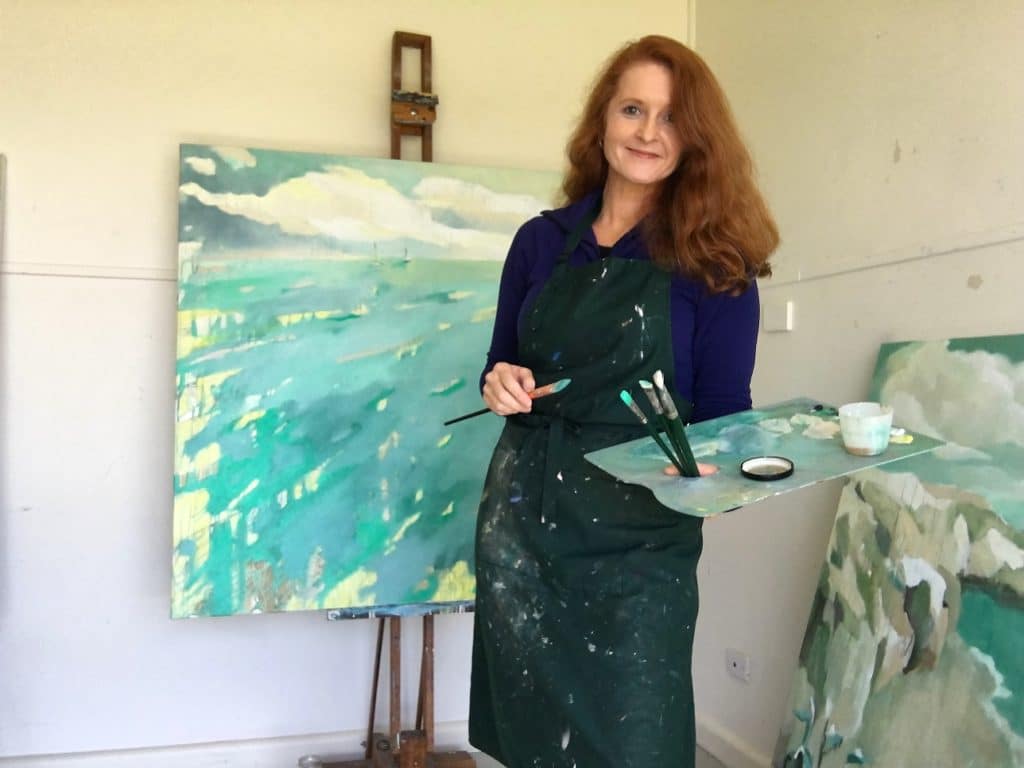
What role does the artist have in society?
I guess it depends on what kind of artist you want to be. I am an expressive painter so I consider my role as an artist is to bring something to the work that hasn’t existed yet. I am inspired by the colours and energy of nature and so this is what I want to bring out in my work. I want to project the energy and joy that lies underneath the surface of the subjects that inspire me. I see my role in society through my art as a way to deliver positivity and the joy of creating. Through the use of colour and movement I get to show my version of the vibrancy of the world I experience around me.
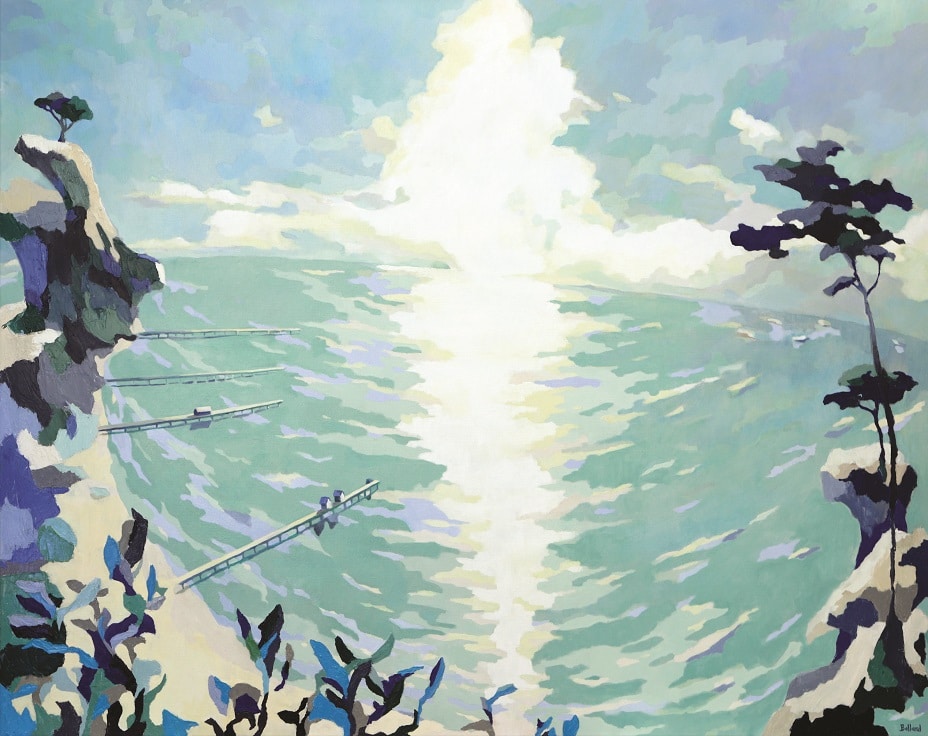
Oblique-Clarity
What art do you most identify with?
There are so many artists that inspire me. My favourites are those with a focus on colour, abstraction and expressive painting. Kandinsky, Cezanne, Monet, Matisse, Derain, Delauney and Georgia OKeefe to name a few. We have had some great painters in Australia too, such as Fred Williams, John Olsen, Horace Trennery and Margaret Olley.
What themes do you pursue?
The focus of my inspiration is on still life and landscapes. For still life, they usually have to be discovered. That means I will find them hidden in broad daylight during my daily travels, in a cafe, on someone’s home or in a bucket in a market. I will usually go for the less flamboyant, the quiet ones in the corner that seem to be forgotten. Transforming them into a painting gives them another life. My landscapes are inspired by my travels. I chase colour around the world and try to gain residencies in places where I get more time to really immerse myself in the landscapes. Venice, New York and Fiji have provided some great places for inspiration. Many of my landscapes deal with the edges of the coast and our human need to locate ourselves near water. There is a connection we feel to water, that we are aware of that which needs replenishing. That and the magic of coastal light.
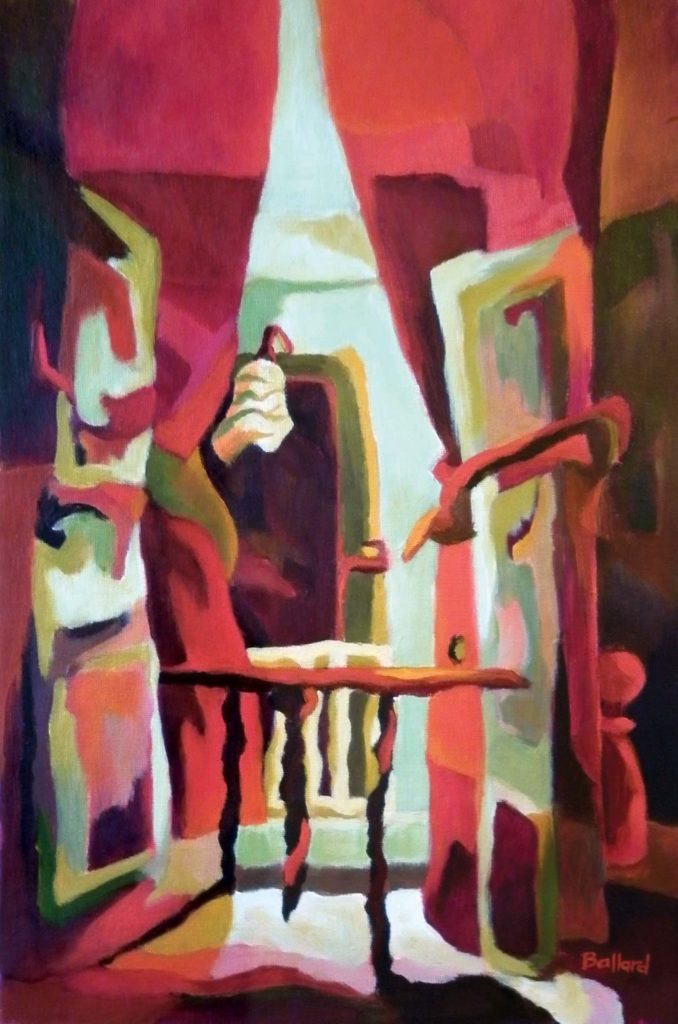
Morning-on-Milans
What’s your favourite art work?
I don’t think any artist will ever say they have a favourite artwork? There are some that behave more than others but they all have their place in your progress. I guess the ones that show you have made a definite shift or development in your process become those milestone ones. Most recently my artwork ‘Emerald City’ felt like I was painting a ‘space’ rather than a ‘place’. It is looser and more abstracted while demonstrating my obsession for layered colour, so in that respect I feel it is a strong example of the place I want to go with my colour and abstracting the landscape.
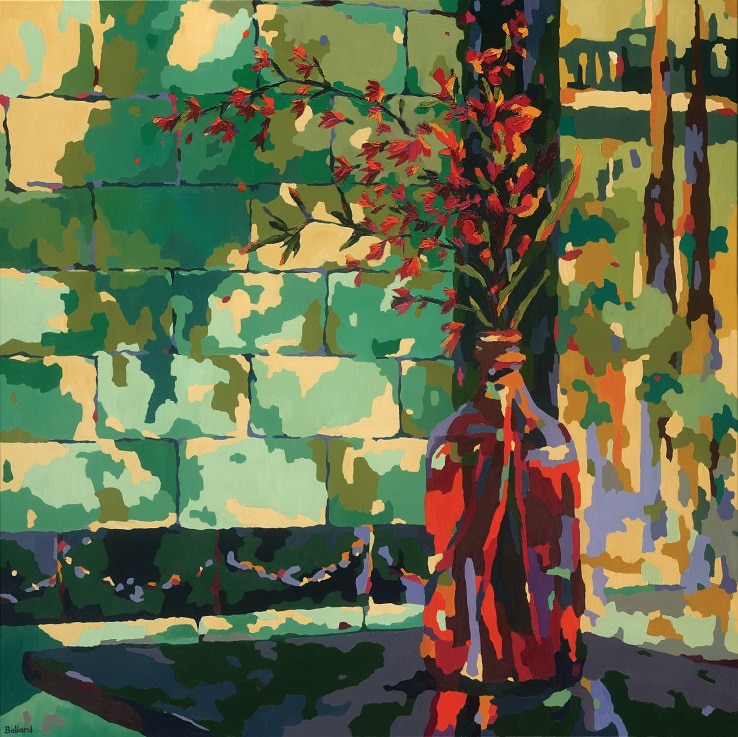
Little-corner-of-Australia-Street
Describe a real-life situation that inspired you?
These are what art residencies are all about. Having time to explore and discover. Last year before the pandemic started I was lucky enough to complete an art residency in the Mornington Peninsula in Victoria, Australia. This is a magic place that many comment on about the light. It lies at the southern tip of the state and is surrounded by water. This area was also exposed to invasion throughout history. It’s rugged coastline is a contradiction of security and escapism. The harsh edges and soft light were captivating. I created a collection of artworks for a show titled ‘Verge’. I continue to paint works inspired by my travels there.
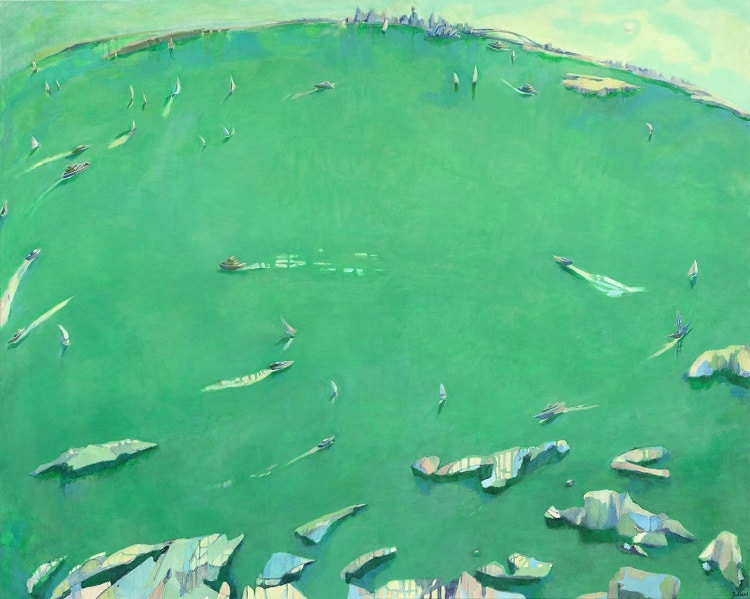
Emerald City
What jobs have you done other than being an artist?
For most artists, you need many other jobs to fund your vocation. I am no different. I got a ‘real job’ after completing my design degree. Back in the 90s there was still a lot of hand drawn skill required but over time things have gravitated to sitting in front of a computer. I spent over 25 years in the design industry as a designer and design manager. Seeking out a more ‘creative’ career I started an art school with a business partner and did this for 12 plus years. It was hard work doing design and the business but I really enjoyed teaching others how to nurture their creativity. It was a lot more rewarding than creating junk mail! I have been the presenter of an Arts Program on EDTV where classes were streamed live to schools in the country. I created lots of art functions such as corporate art events, kids art parties, life drawing functions and art workshops. I also went out on my own and did art tuition to students in their homes. I created art retreats in Fiji and developed an Art Mentoring Program.
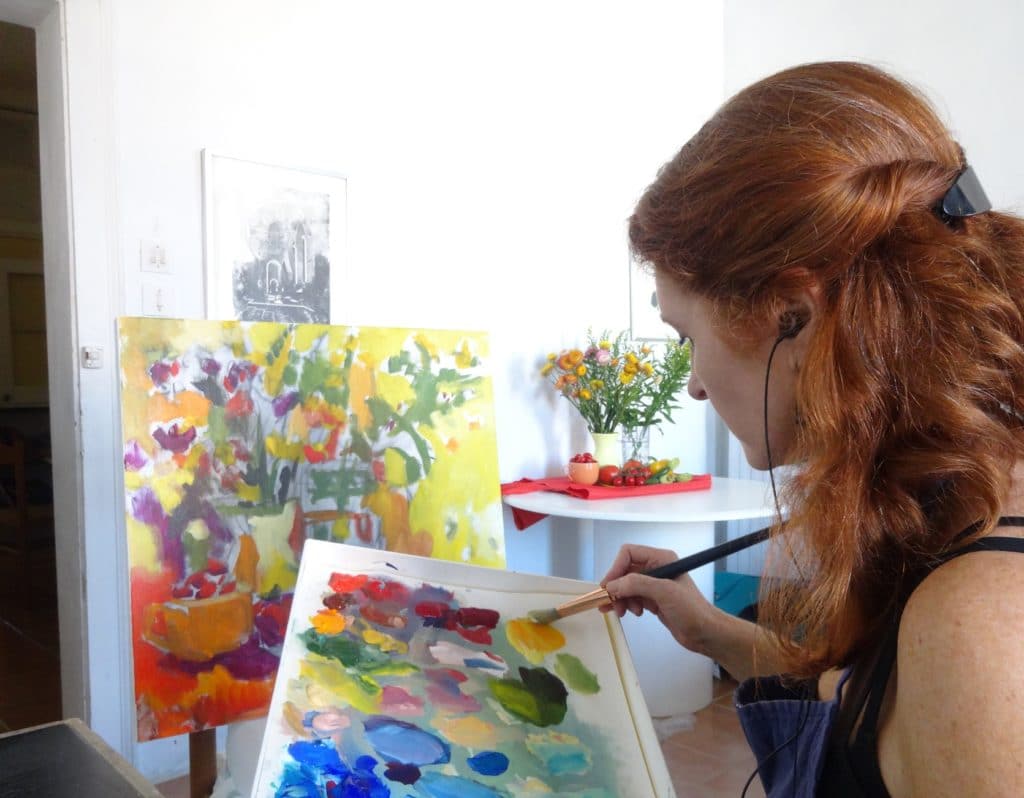
Why art?
Art and creating has always been an integral part of my life. I can’t imagine my life without it. Correction… I wouldn’t want to imagine my life without it. When I had to give up a lot of my art to get into graphic design it made me very sad and mad. Being creative and being around others that think creatively is my daily motivation.
What is an artistic outlook on life?
Having an artistic view of the world helps you understand that there are very many sides and interpretations to every story. The differences of how we experience the world and translate it is the exciting part. No two stories are the same. Painting or any creative pursuit, allows you the opportunity to investigate this and learn more about yourself.
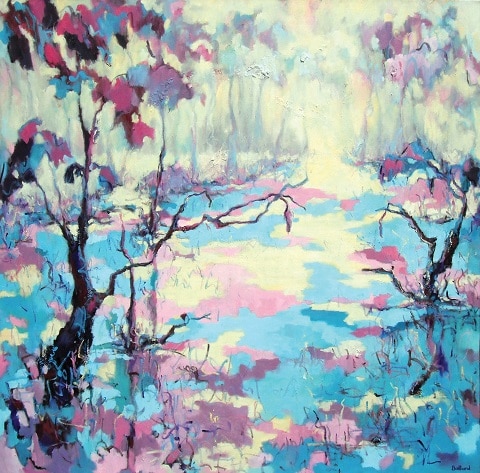
Serenade-of-the-Shadows
What memorable responses have you had to your work?
When I was on an Art Residency in New York I remember the manager of the property looking at one of my pieces on the wall and being so moved she started crying. I thought it was because it upset her but she said that it moved her so much she couldn’t help crying. If only I could do that with every painting. Making a connection with a viewer or having a viewer connect with what you are trying to do is a ‘golden moment’.
Is the artistic life lonely? What do you do to counteract it?
Being an artist is a solo sport. That can be good and bad. You get time to concentrate but you can also be in your head way too much. Having music on or a podcast running in your studio helps keep you connected. You also have to cultivate a creative community and that will mean supporting your fellow artists but going to their shows and turning up to exhibitions and art events.
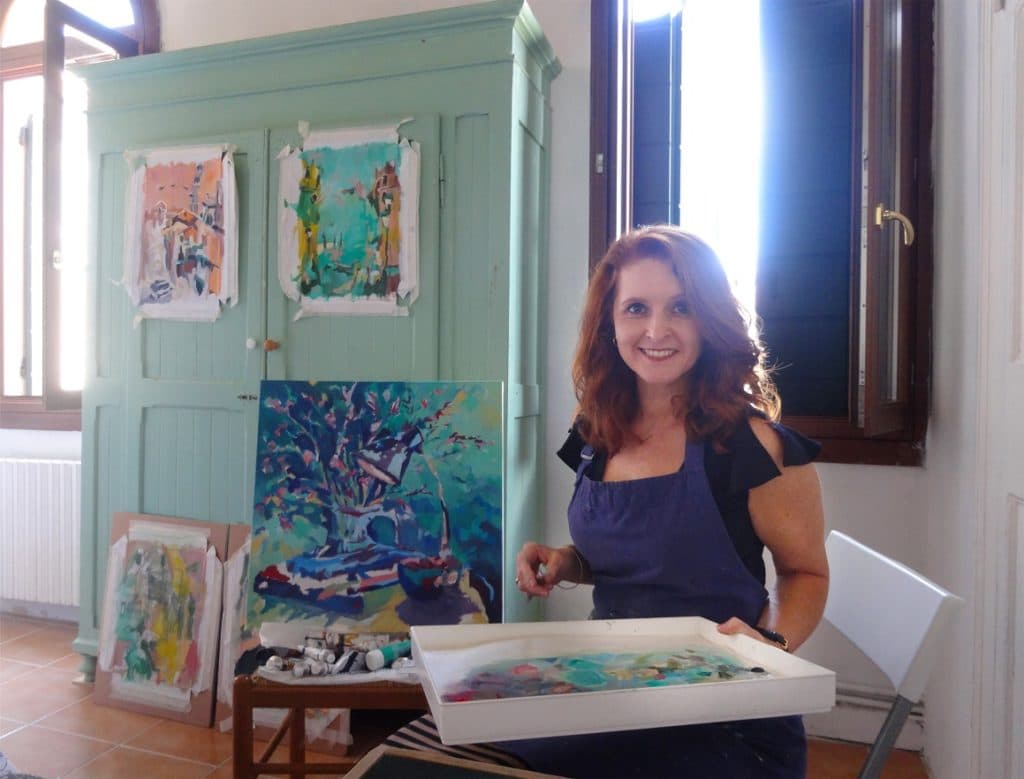
What do you dislike about the art world?
The heirachy. For an industry that promotes breaking all the rules there seem to be a lot of rules. You need to have gone to the right art school, right college, shown in the right galleries and exhibits in order to get into the right competitions. If you didn’t do all that there are a lot of doors that close on you. Understanding that much of the art business is just about that and not about the quality of what you produce is something you have to constantly remind yourself of.
What do you dislike about your work?
Coming from a design background, I am very used to making everything very tidy and have a reason for every mark I make. I am constantly pushing my work to be looser whilst still having meaning. I understand this is a lifelong pursuit. The challenge is to enjoy the journey.
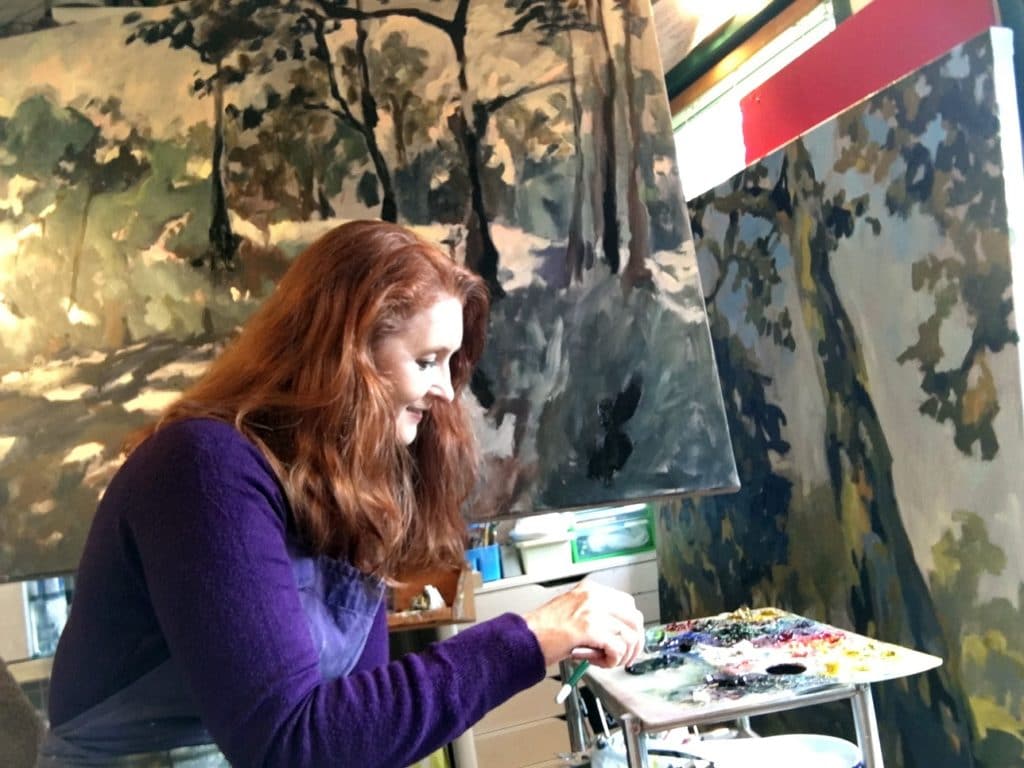
What do you like about your work?
It’s bright and positive. I want my work to uplift people and brighten their day.
Should art be funded?
Funded for what? If you mean should there be more money allocated to the arts it will always be a yes.
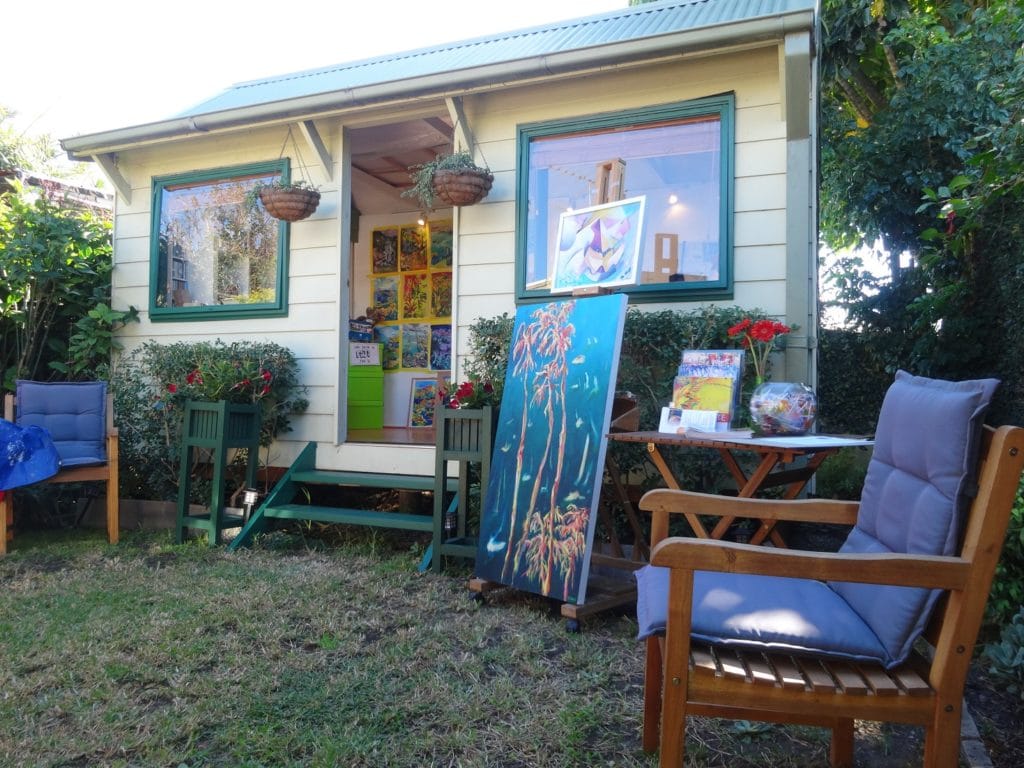
home studio
What role does arts funding have?
Artists don’t really care about dollars, we just want cheaper places we can create in and have enough money to keep creating. If more funding allowed us access to these places then more creations could be made. We know that creating art in our older years can improve our mental health but many governments see it as a luxury item so it is often the first to get cuts. In Australia our government has just increased to cost of all arts degrees. Apparently they don’t believe we matter. Funny, during our lock downs, all those things that helped keep us sane, videos, movies, cooking, crafting were all created by those people who did the arts degrees!
What is your dream project?
I don’t really have just one. I’d love to create a bigger community of accessible arts, open up more exhibiting spaces for artists and create an artist residency program.
I am off to a small start. I have just created 2 Art Retreat offerings and when the world opens up I will relaunch one in Fiji again.
As far as my own artwork is concerned, I want to keep pursuing the development of my style ‘Fragmatism’. Deconstructed shapes and reconstructed colour still holds my fascination. I need to travel to more places around the world to learn about colour. I’d like to get my artwork out there to more collectors and establish a few dependable gallery representations where I could exhibit grow and learn in the gallery industry.
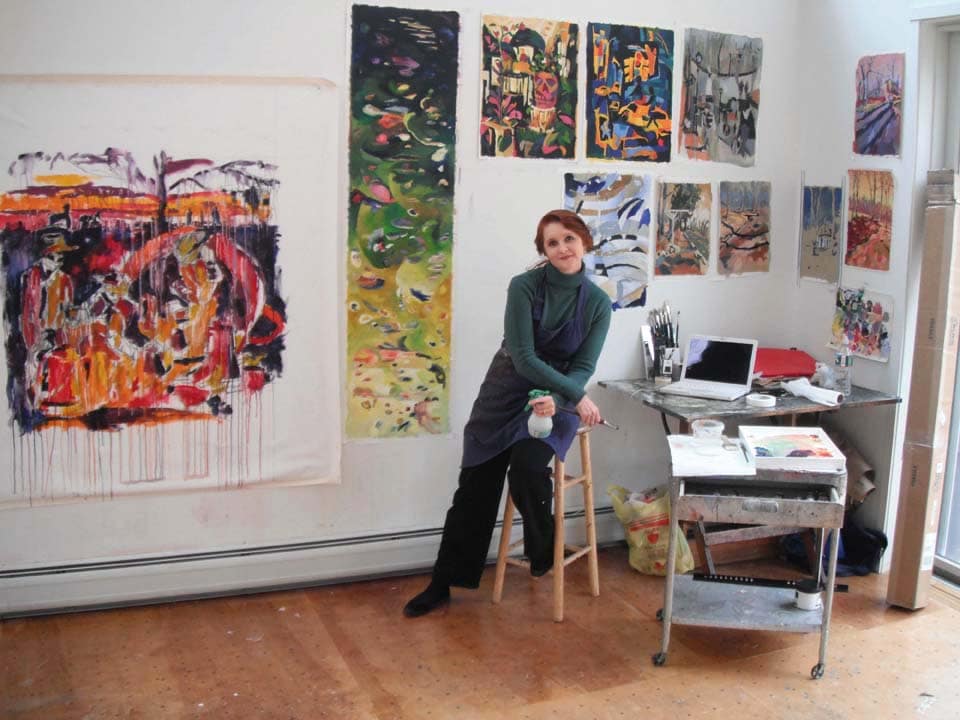
Name three artists you’d like to be compared to.
Kandinsky, Georgia OKeefe and Brett Whiteley
Favourite or most inspirational place?
Venice
What’s the best piece of advice you’ve been given?
Stop trying to prove to me you can paint, and just paint!
.Professionally, what’s your goal?
Have collectors enjoy my works as much as I enjoy making them. Have a sustainable creative life and help others find the joy of creating too.
Future plans?
I have an Art Residency that was booked for 2020 in France that I am hoping to get to when the world opens up. I have a few group shows happening this year in Australia and plans for next year are rumbling. It is very hard to plan amid the current chaos. We are lucky here in Australia as our numbers have been low. Being far away from the rest of the world has some advantages in these crazy times.
Fact Box:
- www.kristineballard.com
- www.instagram.com/kristinekballard/
- www.facebook.com/kristineballardartist
- Here’s a link to a video diary from my last residency https://www.youtube.com/watch?v=HMglHtSbez0


